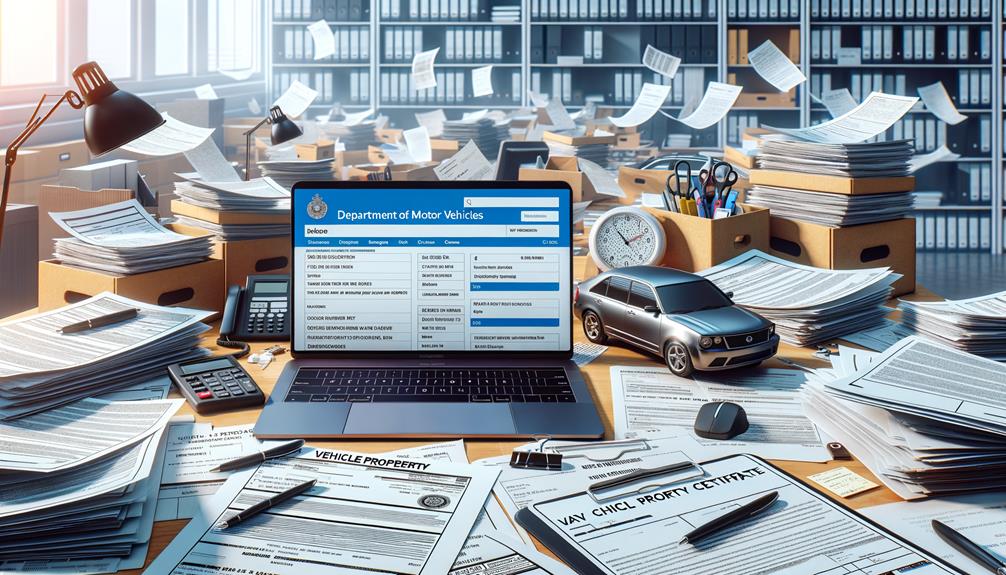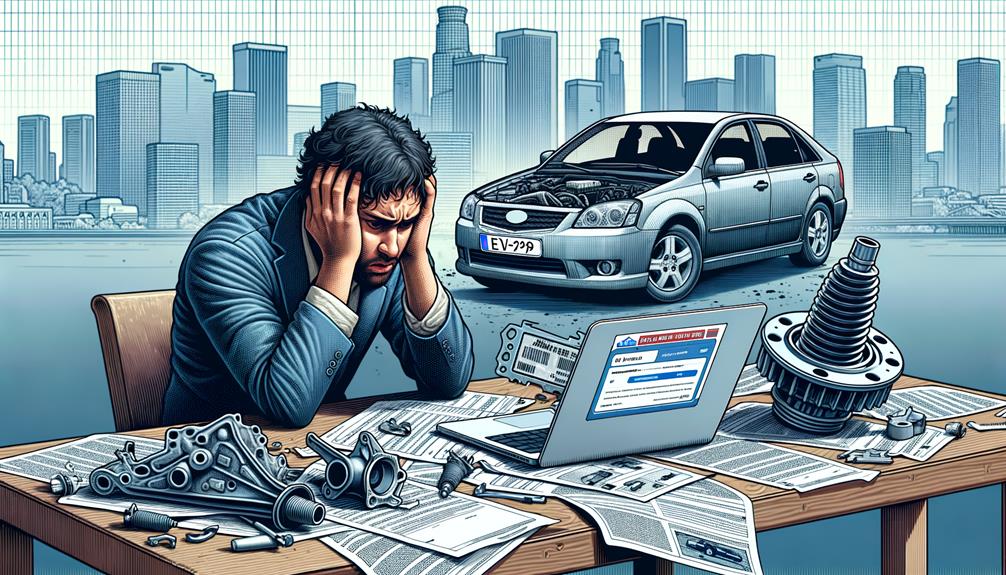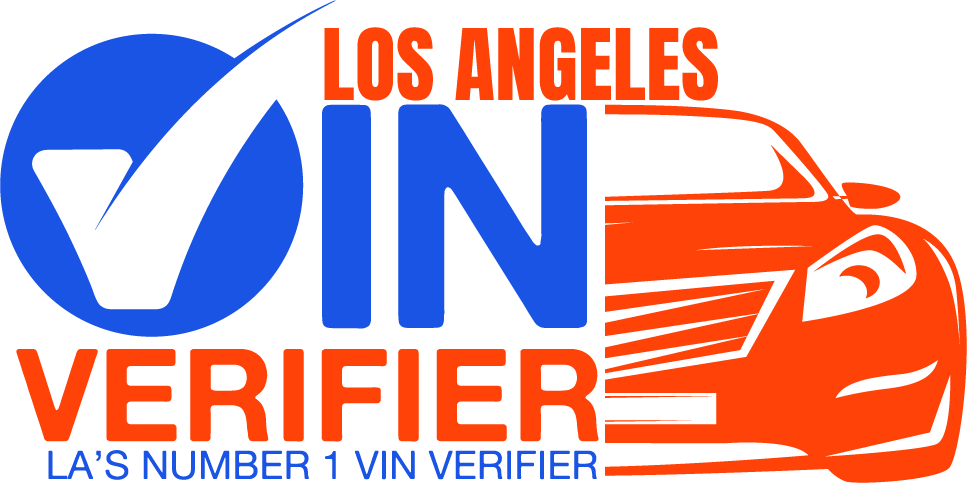If you're planning to register a vehicle in Los Angeles, you'll need to undergo VIN verification, a process that confirms the vehicle's identity matches official records. You'll start by gathering necessary documents and choosing a certified verifier. However, what happens if discrepancies arise during verification? Understanding the nuances could save you time and potential legal headaches. Let's explore how you can smoothly navigate this process and what unexpected challenges you might encounter along the way.
Understanding VIN Verification

VIN verification is essential for ensuring that a vehicle's identity is authentic and matches its documentation. If you're in California, you'll particularly need to understand this process as it's a critical step in vehicle registration and other administrative functions.
This verification involves a VIN verifier examining your vehicle's 17-character Vehicle Identification Number (VIN) to confirm its authenticity and prevent fraud.
When you bring your vehicle for verification, the VIN verifier performs a visual inspection to ensure the VIN is clear and legible. They'll check that this number matches exactly with those on your vehicle's registration, title, and insurance documents. This step is crucial, especially if your vehicle was last registered out of state or it's your first time registering it in California.
The verification process safeguards you by confirming that the vehicle you're buying or registering isn't stolen or salvaged under a false VIN. It helps maintain accurate vehicle history records, making sure you're not unknowingly stepping into legal or financial issues.
Preparing for Verification
Now that you understand the importance of VIN verification, let's focus on how to prepare for this process effectively. Preparing thoroughly will ensure a smooth and successful verification experience, which is essential for updating or establishing vehicle registration with the DMV. Here are the key steps you'll need to follow:
Gather Documents: Collect all necessary documents including the vehicle title and any previous registration paperwork. These are crucial for the VIN verification process.
Check VIN Placement: Ensure the VIN on your vehicle, typically located on the dashboard or door frame, is visible and legible. This makes the inspection process easier.
Verify VIN Accuracy: Double-check that the VIN on your vehicle matches the VIN on your documents to prevent any discrepancies during the verification.
Vehicle Accessibility: Make sure your vehicle is accessible and ready for inspection. You might need to transport it to a designated DMV or VIN verification facility.
Schedule an Appointment: Book a time with the DMV or a licensed VIN verification service in Los Angeles. This helps avoid long waits and streamlines your verification process.
Following these steps will help you navigate the VIN verification process with ease, setting the stage for a hassle-free inspection and registration update.
Locating VIN Verification Services

To locate a VIN verification service in Los Angeles, you can start by checking authorized DMV offices and local law enforcement agencies. These establishments are equipped to handle your vehicle identification number (VIN) verification needs according to state guidelines.
You'll find that the California Highway Patrol (CHP) also offers these services for free, though you'll need to book an appointment and possibly get a referral depending on your vehicle type.
If you're looking for more convenience, consider reaching out to licensed VIN verifiers who operate privately throughout Los Angeles County. Many of these verifiers provide mobile services, meaning they can come to your location, saving you time and hassle.
It's also worth checking with local automotive service providers, including dealerships. However, ensure they're properly licensed to perform VIN verifications to avoid any compliance issues.
Additionally, the National Motor Vehicle Title Information System (NMVTIS) is a valuable resource for verifying vehicle histories and finding credible VIN verification services in the area. By using NMVTIS, you can ensure that the service you choose adheres to legal standards and provides accurate, trustworthy results.
The Verification Process
You'll need to bring your vehicle to an authorized DMV or VIN test center in Los Angeles for the verification process. Here, a qualified verifier will conduct a physical inspection of your Vehicle Identification Number (VIN) to ensure it matches official documents. This step is crucial for your vehicle registration.
Here's what you can expect during a VIN verification:
- Physical Inspection: The verifier will visually inspect your VIN to confirm its authenticity and accuracy.
- Documentation Verification: Your VIN details are checked against vehicle records to prevent any discrepancies.
- REG 31 Form Issuance: Once verified, you'll receive a REG 31 form. This document is essential for completing your vehicle registration at the DMV.
- Scheduling an Appointment: Remember, appointments might be necessary, especially if you're planning to visit a California Highway Patrol (CHP) station, as they offer free verification but require you to schedule ahead.
Completing these steps will ensure a smooth process and avoid any hiccups in registering your vehicle in Los Angeles.
Documentation Requirements

Before beginning the VIN verification process, ensure you have all the necessary documents gathered. This preparation is crucial to avoid any hiccups during your visit to the verification location.
First and foremost, you'll need the REG 31 form, commonly known as the VIN Verification Form. This form requires details such as the vehicle's VIN and the odometer reading, so make sure these are handy.
Additionally, bring along your vehicle title and proof of ownership. These documents are essential as they confirm your legal ownership of the vehicle. Don't forget your identification, especially if you're working with private verifiers; they'll need to verify that you're indeed the vehicle's owner.
Since the vehicle must be physically present for the verification, prepare for a thorough physical inspection. This isn't just a paperwork exercise; the verifier will check if the VIN on your vehicle matches the one on your documentation.
If your vehicle is from out of state or has undergone significant modifications, you might need extra documentation to demonstrate compliance with California regulations. Having these documents organized and ready will streamline the verification process, making it as smooth as possible.
Post-Verification Steps
After completing the VIN verification, make sure you receive the verification form or certificate, as it's essential for DMV registration. This form is your proof that your vehicle meets all the necessary requirements set by the Department of Motor Vehicles.
Here's what you need to do next:
- Submit the REG 31 form: Along with your VIN verification form, submit the completed REG 31 form to the DMV. This is crucial for processing your vehicle registration.
- Check for discrepancies: Before you head to the DMV, make sure there are no discrepancies between the verification form and your vehicle's official documents.
- Retain a copy: Always keep a copy of the VIN verification form for your records. You'll need this if any issues arise with your vehicle's registration in the future.
- Be timely: If you don't submit your verification form within 30 days, you'll have to go through the verification process again, which might involve additional fees.
Following these steps will ensure a smooth continuation of your vehicle's registration process.
Handling Verification Issues

If your vehicle's VIN doesn't match your documents, you need the verifier's signature on the REG 31 form to correct this discrepancy. This step is crucial to align your vehicle's identification with official records.
Ensuring accuracy on the REG 31 form is essential; any mistakes can lead to delays in your vehicle's registration process. Double-check all fields for errors or cross-outs before submission to avoid unnecessary hold-ups.
Should your VIN be illegible or missing, the DMV might refer your vehicle to the California Highway Patrol (CHP) for further verification. This additional step ensures that the VIN and the vehicle match and are registered correctly under the law.
If the discrepancy in your vehicle's title or registration arises from clerical errors, a new VIN verification might be needed to set things right.
Benefits of VIN Verification
Why should you consider VIN verification? It safeguards against vehicle theft and fraud by ensuring the VIN matches official documents and confirms ownership authenticity. This process is particularly crucial if you're registering a vehicle in California, especially for cars from out of state or those previously unrecorded in DMV systems.
Here are some key benefits of VIN verification:
- Prevents Vehicle Theft: It checks if the car's VIN matches the one on record, reducing the risk of buying a stolen vehicle.
- Facilitates Registration in California: Ensures all required details are accurate for a smooth registration process.
- Access to Vehicle History: Provides a detailed report that highlights past accidents, service points, and ownership changes.
- Ensures Legal Compliance: Keeps you on the right side of the law by confirming your vehicle meets state and federal regulations.
Understanding these benefits helps you appreciate why VIN verification isn't just a bureaucratic step, but a crucial process to protect your investment and ensure peace of mind.

